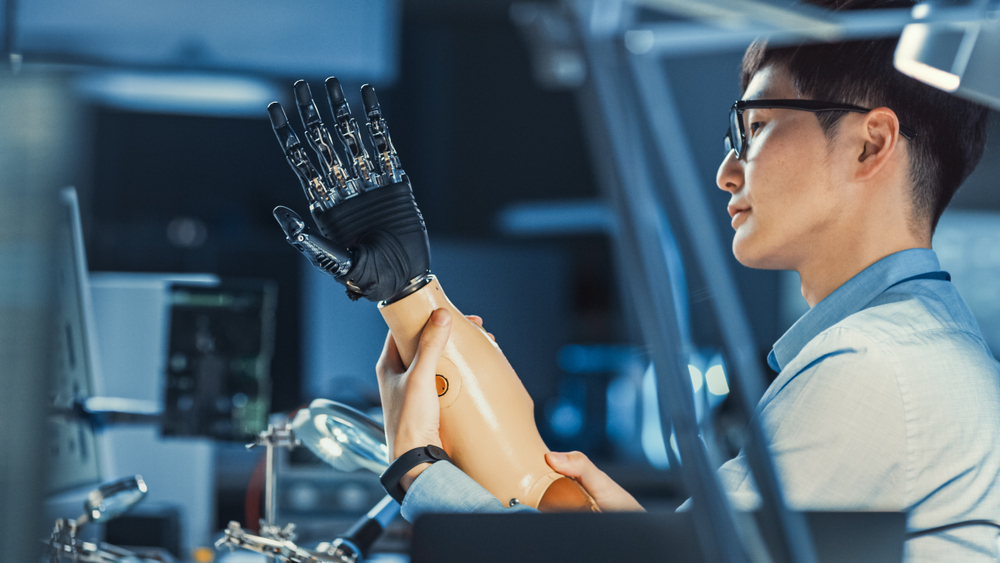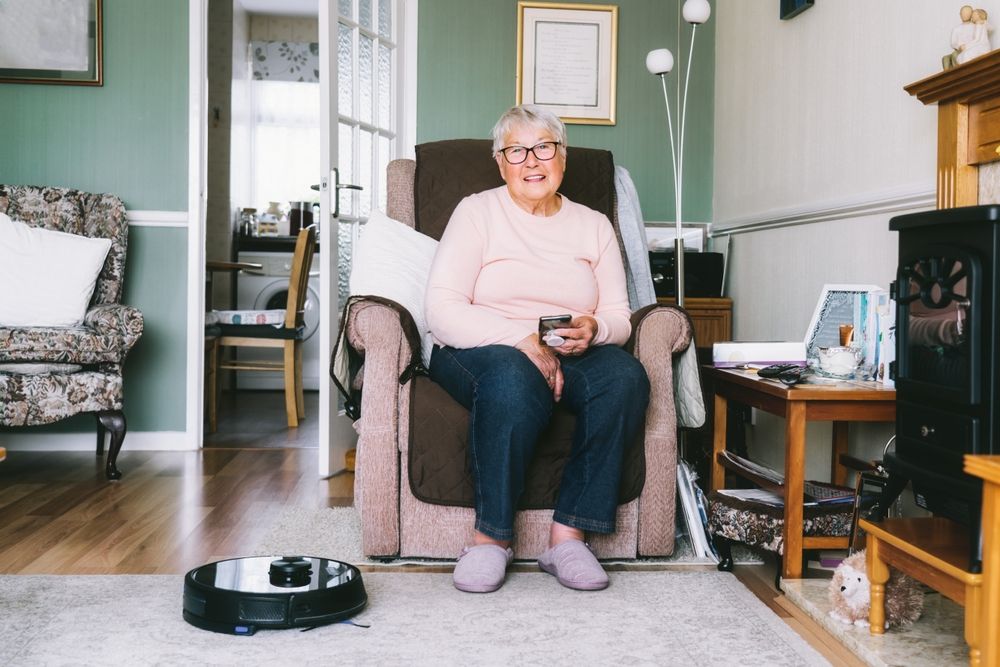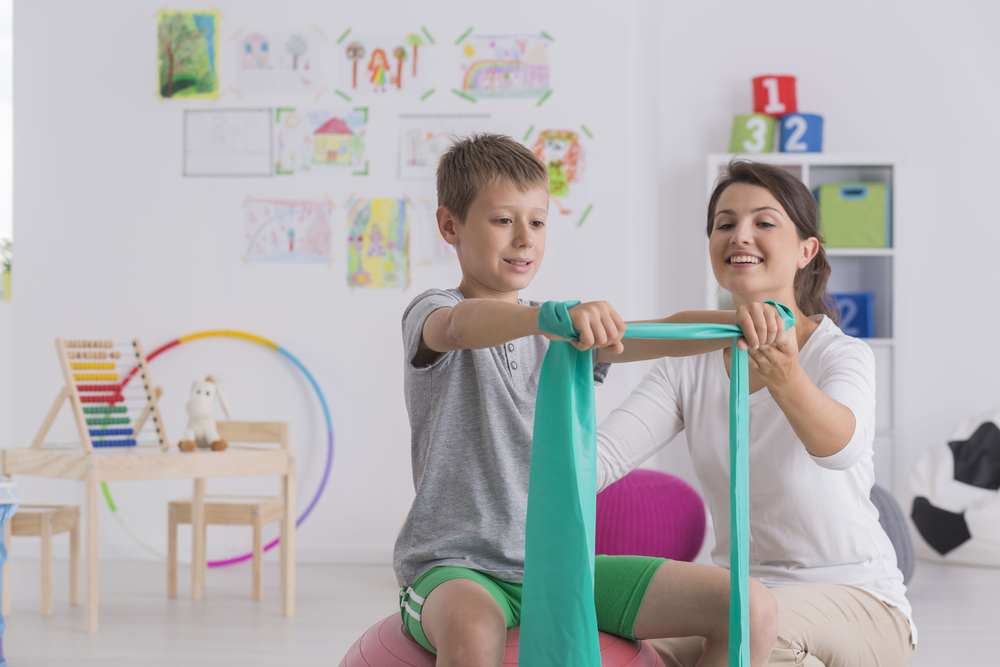Make an Appointment
Assistive technology devices have become an essential part of daily life for many people with physical disabilities. These devices are designed to help individuals with physical impairments to perform everyday tasks, access education and employment opportunities, and enhance their quality of life. The use of assistive technology has increased dramatically over the past few years, thanks to advances in technology and increased awareness of the benefits of these devices.
In this article, we will explore the different types of assistive technology devices available for people with physical disabilities. We will also discuss how these devices can help individuals with physical impairments to overcome barriers and challenges they face in their daily lives. Additionally, we will provide information on how to choose and access assistive technology devices, examples of assistive technology devices, and the latest advancements in this field. Finally, we will discuss how Physio Inq can help individuals with physical disabilities access the right assistive technology devices and services.
Table of Contents
I. Types of Assistive Technology Devices
II. How Assistive Technology Devices Help People with Physical Disabilities
III. Challenges and Barriers to Accessing Assistive Technology Devices
IV. How to Choose and Access Assistive Technology Devices
V. Examples of Assistive Technology Devices for Physical Disabilities
VI. Assistive Technology Devices and Services Provided by Physio Inq
VII. Advancements in Assistive Technology Devices for Physical Disabilities
VIII. Conclusion
Types of Assistive Technology Devices
Assistive technology devices for physical disabilities are designed to help individuals with mobility, communication, and other impairments to perform everyday tasks more easily and independently. These devices can be essential in improving quality of life and allowing individuals with disabilities to participate more fully in their communities.
Speech-generating devices are one type of assistive technology device that can be incredibly helpful for individuals with speech impairments. These devices can range from basic communication boards to high-tech devices that use text-to-speech software to convert written words into spoken language. Speech-generating devices can help individuals with a range of conditions, including cerebral palsy, ALS, and autism, to communicate more effectively and independently.
Hearing aids are another common type of assistive technology device, which can help individuals with hearing impairments to better understand speech and sounds in their environment. Hearing aids can be customized to suit individual needs, and they can come in a range of styles and sizes, from behind-the-ear models to tiny in-ear devices.
Alternative input devices are designed to enable individuals with mobility impairments to control their electronic devices using alternative methods, such as eye-tracking, head movements, or mouth-operated switches. These devices can be essential for individuals with conditions such as muscular dystrophy, spinal cord injuries, or cerebral palsy, who may have difficulty using traditional input devices such as a mouse or keyboard.
High-tech home automation devices can also be incredibly helpful for individuals with physical disabilities, enabling them to control their home environment more easily and independently. These devices can range from voice-activated assistants such as Amazon Echo or Google Home, to more advanced systems that can control everything from lights to appliances to security systems.
Mobility aids and orthotic devices, such as wheelchairs, prosthetics, and braces, can also be essential in helping individuals with mobility impairments to move around independently and safely. There are many different types of mobility aids and orthotic devices available, ranging from basic manual wheelchairs to advanced motorized models.
Finally, environmental control devices are designed to enable individuals with physical disabilities to control their home environment, such as turning on lights, opening doors, or adjusting the thermostat, using voice commands or remote controls. These devices can be incredibly helpful for individuals with conditions such as muscular dystrophy or spinal cord injuries, who may have difficulty using traditional switches or controls.
Overall, assistive technology devices for physical disabilities can make a significant difference in the lives of individuals with mobility, communication, and other impairments. By providing essential support and enabling greater independence and participation in daily life, these devices can enhance quality of life and promote greater inclusion and accessibility.
How Assistive Technology Devices Help People with Physical Disabilities
Assistive technology devices can help people with physical disabilities in several ways, including:
Improving independence and mobility: Mobility aids, such as wheelchairs, can help individuals with mobility impairments move around more easily and independently, while environmental control devices can enable them to control their home environment and perform daily tasks with greater ease.
Enhancing communication: Speech-generating devices can help individuals with speech impairments to communicate more effectively, while hearing aids can help them to better understand speech and sounds in their environment.
Providing access to education and employment opportunities: Alternative input devices can enable individuals with mobility impairments to use computers and other electronic devices, providing them with access to education and employment opportunities.
Enhancing quality of life: Assistive technology devices can improve the quality of life for individuals with physical disabilities by enabling them to perform everyday tasks more easily, communicate more effectively, and participate more fully in their communities.
Challenges and Barriers to Accessing Assistive Technology Devices
Despite the benefits of assistive technology devices, there are still several challenges and barriers that individuals with physical disabilities may face in accessing these devices, including:
Cost: Many assistive technology devices can be expensive, and not all insurance policies cover them. This can make it difficult for individuals with physical disabilities to access the devices they need.
Lack of awareness and information: Some individuals with physical disabilities may not be aware of the assistive technology devices that are available to them, or they may not have access to accurate and reliable information about these devices.Insufficient insurance coverage: Even when insurance policies do cover assistive technology devices, they may not cover the full cost of the device or may limit the types of devices that are covered.
Limited availability of certain devices: Some assistive technology devices may not be widely available in certain regions or countries, making it difficult for individuals with physical disabilities to access the devices they need.
Stigma and discrimination: There may be social and cultural barriers that prevent individuals with physical disabilities from accessing assistive technology devices, such as stigma or discrimination.
How to Choose and Access Assistive Technology Devices
Choosing and accessing the right assistive technology devices can be challenging, but there are several steps that individuals with physical disabilities can take to ensure that they find the devices that meet their needs. These steps include:
Consulting with healthcare professionals and assistive technology specialists: Healthcare professionals and assistive technology specialists can provide guidance and support in choosing the right devices and accessing the necessary resources.Considering individual needs and preferences: Assistive technology devices should be chosen based on individual needs and preferences, taking into account factors such as the individual's mobility, communication abilities, and daily living requirements.
Researching available options and resources: There are many different assistive technology devices available, and it is important to research the options and resources that are available to find the devices that are most suitable for individual needs.
Advocating for improved access to assistive technology devices: Individuals with physical disabilities and their advocates can work to improve access to assistive technology devices by advocating for policies and programs that support the needs of individuals with physical disabilities.
Examples of Assistive Technology Devices for Physical Disabilities
Assistive technology devices are designed to help individuals with physical disabilities to perform everyday tasks more easily and independently. Here are some examples of the different types of assistive technology devices that can be beneficial for individuals with physical disabilities:
Wheelchairs: Wheelchairs are mobility aids that enable individuals with mobility impairments to move around independently and safely. There are many different types of wheelchairs available, including manual wheelchairs, power wheelchairs, and hybrid wheelchairs. These devices can be customized to fit individual needs and preferences, with options such as adjustable seating, tilting or reclining seats, and customizable armrests and footrests.
Voice recognition software: Voice recognition software can enable individuals with physical disabilities to control their electronic devices using voice commands, eliminating the need for manual input. This technology can be particularly helpful for individuals with conditions such as muscular dystrophy, spinal cord injuries, or cerebral palsy, who may have difficulty using traditional input devices such as a mouse or keyboard.
Environmental control devices: Environmental control devices can enable individuals with physical disabilities to control their home environment, such as turning on lights, opening doors, or adjusting the thermostat, using voice commands or remote controls. These devices can be incredibly helpful for individuals with conditions such as muscular dystrophy or spinal cord injuries, who may have difficulty using traditional switches or controls. Environmental control devices can also be customized to suit individual needs, with options such as voice-activated systems, smartphone apps, and remote controls.
Augmentative and alternative communication devices: Augmentative and alternative communication devices can help individuals with speech impairments to communicate more effectively, using methods such as text-to-speech or picture communication. These devices can range from simple communication boards or books to more advanced devices that use text-to-speech software to convert written words into spoken language. Augmentative and alternative communication devices can be customized to suit individual needs and preferences, with options such as touch screens, eye-tracking systems, and voice amplification.
Smart prosthetics: Smart prosthetics use sensors and other technology to provide more natural movement and improved functionality for individuals with limb amputations. These devices can be controlled using a range of methods, including muscle signals or even thought, and can enable individuals to perform a wider range of activities than traditional prosthetics. Smart prosthetics can also be customized to suit individual needs and preferences, with options such as adjustable grip strength or finger movement.
Assistive technology devices for physical disabilities can have a transformative impact on the lives of individuals with mobility, communication, and other impairments. By providing essential support and enabling greater independence and participation in daily life, these devices can enhance quality of life and promote greater inclusion and accessibility. It is important to consider the different types of assistive technology devices available and to choose the ones that best fit individual needs and preferences. And remember, assistive technology devices are not just for physical disabilities - they can also benefit the elderly and those in need of occupational therapy. For more information on how assistive technology can empower independence for the elderly, check out our article "Empowering Independence: Assistive Tech for the Elderly at Home." And to learn about the power of occupational therapy in unlocking potential through assistive technology, see our article "Unlock Your Potential: Occupational Therapy and the Power of Assistive Technology."
Assistive Technology Devices and Services Provided by Physio Inq
Physio Inq, one of the biggest NDIS and Aged Care Allied Health companies in Australia, provides a range of assistive technology devices and services for individuals with physical disabilities, including physiotherapy, occupational therapy, and speech pathology services. These services can help individuals with physical disabilities to access the devices and support they need to improve their quality of life.
Physiotherapy services provided by Physio Inq include mobile and in-home assessment and treatment for mobility impairments, such as muscle weakness, spasticity, and balance issues. This can include the prescription of mobility aids, such as wheelchairs and braces, as well as exercises and therapies to improve strength and mobility.
Occupational therapy services provided by Physio Inq can help individuals with physical disabilities to improve their ability to perform daily living tasks, such as dressing, grooming, and cooking. Occupational therapists can also provide guidance on how to modify the home environment to make it more accessible and safe.
Speech pathology services provided by Physio Inq can help individuals with speech impairments to improve their communication abilities, using methods such as augmentative and alternative communication devices and voice therapy.
In addition to these services, Physio Inq also provides access to a range of assistive technology devices, such as wheelchairs, environmental control devices, and speech-generating devices. By providing a comprehensive range of services and devices, Physio Inq can help individuals with physical disabilities to access the support they need to live more independently and fully.
Advancements in Assistive Technology Devices for Physical Disabilities
Advances in technology have led to many exciting developments in assistive technology devices for physical disabilities. For example, there have been significant improvements in prosthetic technology, including the development of smart prosthetics that use sensors and other technology to provide more natural movement and improved functionality.
Other recent advancements in assistive technology devices include the development of exoskeletons, which can enable individuals with mobility impairments to stand and walk, and the use of virtual reality technology to provide therapy and training for individuals with physical disabilities.
As technology continues to evolve, there is great potential for further advancements in assistive technology devices, which could significantly improve the lives of individuals with physical disabilities.

Conclusion
Assistive technology devices can provide essential support for individuals with physical disabilities, enabling them to perform everyday tasks more easily, communicate more effectively, and participate more fully in their communities. However, there are still many challenges and barriers to accessing these devices, and it is important to work to improve access to assistive technology devices for all individuals with physical disabilities.
By providing a comprehensive range of services and devices, including physiotherapy, occupational therapy, speech pathology, and assistive technology devices, Physio Inq can help individuals with physical disabilities to access the support they need to live more independently and fully. As technology continues to evolve, there is great potential for further advancements in assistive technology devices, which could significantly improve the lives of individuals with physical disabilities.
If you need more information on how Physio Inq can support you or a loved one with physical disabilities, don't hesitate to contact our wonderful client services team. Our team is dedicated to providing personalized support and guidance to help you find the services and assistive technology devices that are right for you. Contact us today to learn more on 1300 731 733
Date Published: Wednesday, March 22, 2023
Locate a NDIS Occupational Therapy
Service Near me
Get the experience & convinence you deserve to support your or a loved one's allied health needs.
Our NDIS Occupational Therapy team are currently serving & taking appointments in the following states and regions in Australia:
Need to get into direct contact with ur Client Services team? We're all ears. Call our team directly on 1300 731 733








